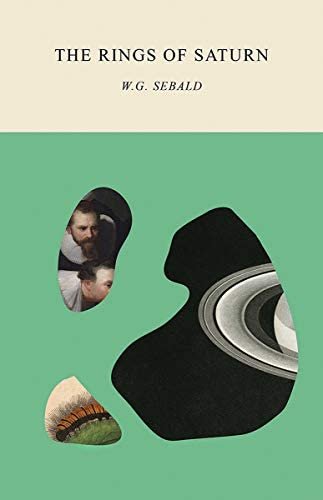6 Must-Read Travel Books
As travel professionals and travel lovers, we look for any opportunity to learn more about the world around us and explore more of its hidden depths. For travel writers or writers incapable of not putting the Earth's beauty to words, communicating that desire is a lifelong endeavor, producing some of the most incredible literature.
We’ve put together a list of our favorite travel writers and travel books to renew and revitalize your wanderlust this summer. Whether you’re headed out on a backpacking trip or relaxing beachside, any one of these recommendations will be sure to sweep you off on another equally enriching journey across the world.
Photo by Ivo Rainha on Unsplash
1. A Walk in the Woods: Rediscovering America on the Appalachian Trail, Bill Bryson
Any list of exceptional travel writers that doesn’t mention Bill Bryson would not be worth its salt. Bryson is a giant in the travel literature world, even while being best known for his popular science book A Short History of Nearly Everything.
A Walk in the Woods recounts Bryson’s desire and subsequent venture into the Appalachian Trail near his house. Accompanied by an old friend, the two men hiked the trail from Georgia in the South, experiencing tremendous difficulties and hardships along the way. The book is funny and irreverent, often absurd, but it reckons with human frailty and nature in an honest, unflinching way.
The book has also been credited with a 50% increase in long-distance hiker numbers in the years following, so perhaps this a good opportunity for any reader to start planning their own Appalachian hike.
2. To The River, Olivia Laing
In this book, Laing explores the idea of a physical place as a palimpsest, with histories written over each other. The Ouse, a river in Sussex, functions as a zone of overlapping stories, at once the site of a brutal battle during the Barons' War of the thirteenth century and where nineteenth-century amateur naturalists first cracked the fossil code. It also happens to be the river where Virginia Woolf drowned in 1941.
What Laing’s book does is collapse history and the idea of travel to a single point. When we visit somewhere, we are visiting not only the narrative of that place in our minds, but the totality of its existence.
3. Underland, Robert Macfarlane
The subject matter and tone of Underland is chthonic - this is a book that takes its first steps into the Earth and does not think to reemerge. The book takes the reader through the underground cities of Odessa and Paris to the cave system in the Mendips. Macfarlane discusses the tales of Orpheus and Eurydice, the Minotaur, and other mythological figures, but also connects their stories to the very real underground explorations of cave systems by amateur spelunkers and soldiers during the second World War.
A reader could easily find themselves lost in this book with its vast underground cave networks and almost claustrophobic moments, but they would be hard pressed to deny enjoying every moment of it.
4. Flâneuse, Lauren Elkin
“Flâneuse [flanne-euhze], noun, from the French. Feminine form of flâneur [flanne-euhr], an idler, a dawdling observer, usually found in cities. That is an imaginary definition.”
Elkin’s own description of the flâneuse, as a “a determined resourceful woman keenly attuned to the creative potential of the city, and the liberating possibilities of a good walk” sets the tone of this book, taking a quintessential masculine figure (the flaneur) and looking at the concept through the lens of the feminine. Elkin looks at what the urban setting has meant to women and their contributions to ‘The City’.
5. Travels with Herodotus, Ryszard Kapuściński
The Histories alone could’ve been its own entry on this list, but the blending of past and present in Kapuściński’s book provides an interesting lens for readers to see the trajectory of travel literature. Working as a writer/journalist just out of university in 1955, Kapuściński travels across India, China, Iran, and the Congo, with only a copy of Herodotus’ The Histories as his companion.
Travels with Herodotus is a political work as much as it is a travel book. Throughout the book, Kapuściński always has an eye on the global undercurrents, as his journey merges with transformative movements in an increasingly globalized world; even seventy years after its publication, many of Kapuściński’s observations and concerns can still be understood.
6. The Rings of Saturn, W.G. Sebald
The Rings of Saturn, written by W.G. Sebald in 1995, is one of those rare life-changing books that you only come across every so often.
On a walking tour of Suffolk, England, a nameless narrator meditates on the rivers and roads along the way, drawing connections between his observations and moments throughout history and literature. From the introduction of silkworm cultivation to Europe and the writings of Thomas Browne, to “[sitting] there in Southwold overlooking the German Ocean”, the narrator is able to pull these seemingly distinct threads into a tapestry of human history.
Curious about how Umapped can help you meet all of your clients’ needs?
If your travelers are looking to get away from it all and truly unwind on their trip, there are so many ways to meet all of their needs. Using digital itinerary solutions, like Umapped, travel agents can not only provide their travelers with a safe and secure way to access their itinerary and suggest activities for their clients to enjoy, they can also use our Note functionality to recommend leisure activities, like book and movie recommendations.
See why more and more advisors are turning to digital solutions like Umapped by signing up for a free trial and joining one of our introductory webinars.







